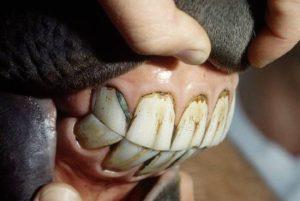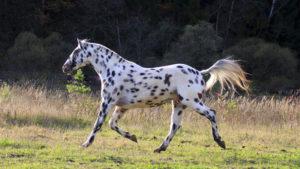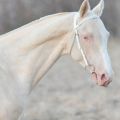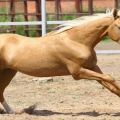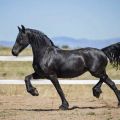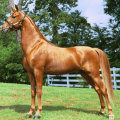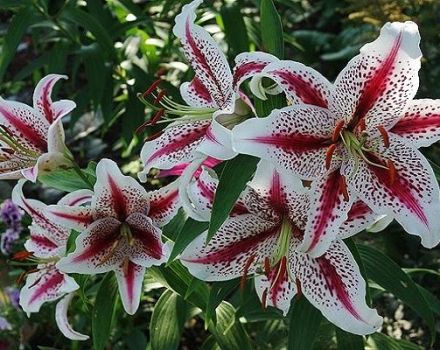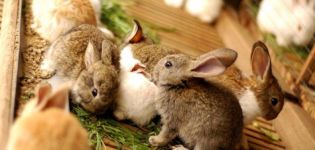Roan horse breeds and how to keep them, history and color varieties
The roan suit of a horse is called an unusual manifestation of nature. Basically, this color feature is manifested in horses of dark colors. The hair color is presented in the form of multiple snow-white blotches along the croup, except for the head and limbs. Usually the mane and legs remain the main color. This type of pigment distribution has a genetic basis.
History and origins
In nature, wild stallions evolved, individuals of black color appeared, which are considered rare specimens. This feature is now being monitored by breeding specialists. The name of the suit comes from the Turkic language, in translation the word "chal" means gray. To donate such a horse to a local was considered a sign of deep respect.
This color is referred to as a unique natural phenomenon, a horse with this color is a very rare type of representative of the animal world. It is noteworthy that if the skin is damaged, wool of the main color grows in this place.
Color gene
A foal of this color appears in parents if the stallion has an active Rn gene, which is dominant. In this case, the horse must have wild predecessors in the family. Two individuals of a similar color are not crossed, as this leads to the death of the tribe. With a passive gene, it is inherited by the next generation.
The gene has no connection with a specific breed, it looks spectacular on black and dark horses. This unique phenomenon appears zonal and non-zonal. When white hairs are located on the body of an animal in small areas, this feature is called zonal color. If small light hairs evenly cover the entire body of the horse, this arrangement is referred to as a non-zonal species.
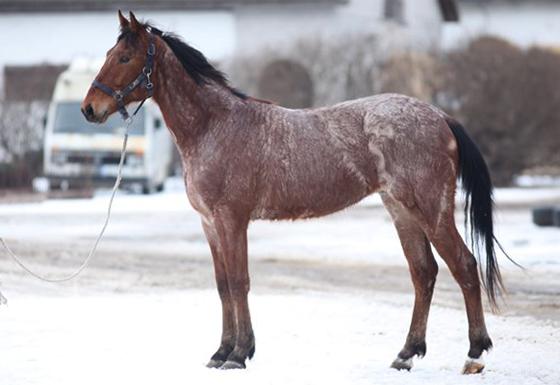
A noble roan horse is distinguished by the following features:
- The eyes and hooves remain black in the presence of the Rn gene. The exception is the feature of a particular suit.
- Individuals do not turn gray. Over time, the base color may become even darker. White blotches can lose their saturation a little, but they do not disappear at all.
- Depending on the season, some horse breeds change the shade of the pile. The mane remains unchanged all year round.
- The tail also retains its color throughout the life of the ungulates. A feature of the Savraso-roan breed is the presence of white strands of hair in the tail.
- At the site of damage, tissue regeneration occurs. Upon healing, a base color coat grows.
The gene is not tied to sex, therefore it appears in females and males.An animal inherits a genotype, it can appear in a new generation in 50% of cases.
Varieties of roan color
The classification of suits is a division into background and component parts of the color, which, in turn, are subdivided into zonal and non-zonal types. There are five suits, the rest are considered apprentices.

There are about 50 species of them.
- Bay roan. The base color is brown, less often red-brown. The head and legs remain in the background color, the coat appears light brown over the rump. It is considered the most common color among horses.
- Black Roan - implies a contrast of white on black, in contrast they give the body a smoky color. From a distance, the horse appears to have a bluish tint.
- Red-roan - individuals have a beautiful color, from a distance it seems that they have a pink color. Horses of a red-red shade look especially gorgeous.
- Nightingale roan - rarely appears, characterized by the fact that a salted horse with gray hair in the spring acquires a fawn color.
- Savraso-roan - a feature of this color is the similarity with the wild forest colors of horses. In the tail, light long strands of hair are observed.
Bucky horses are rare. The beautiful suit is distinguished by a golden tint of the body. The legs, mane and tail remain in a deep, coal-black color.
Temper and behavior
Zootechnicians note that willfulness is inherent in black horses. This color belongs to rare species. The color of a horse does not change throughout its life.
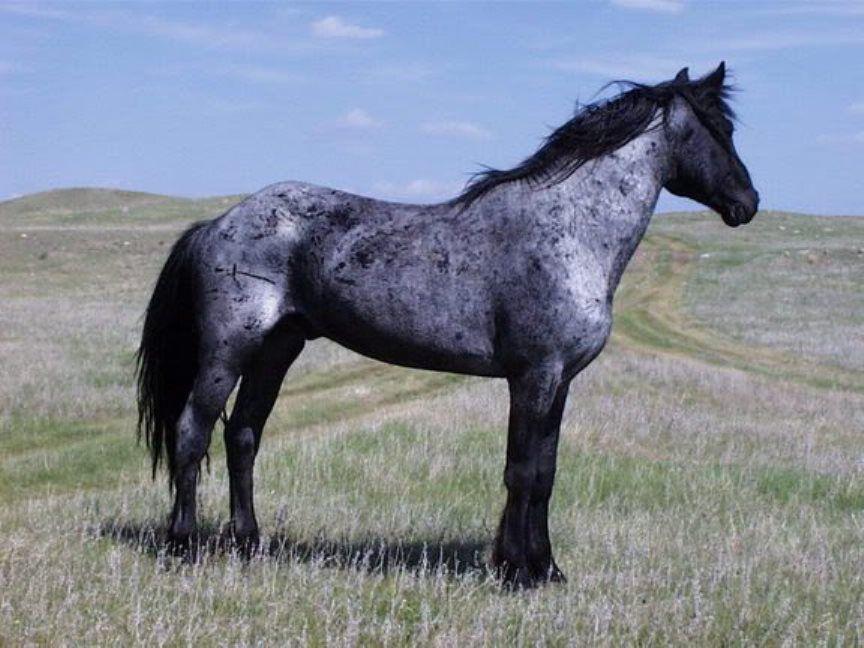
Among zootechnicians there is a debate about the influence of the genotype on the character and behavior of the animal. According to the observation of horse breeders, it was noted that black horses are distinguished by a complex disposition, bay ones have endurance, and gray horses are sensitive creatures. The behavior of the animal is also influenced by the breed with which the roan was crossed.
Roan horse breeds
Roan is not characteristic of all thoroughbred horses. In Oryol trotters, it is absent. The characteristic spotting appears in foals whose ancestors were of common color.
White blotches are characteristic of the Bashkir heavy draft horse breed. The presence of whitish spots and blotches is considered a good sign and is encouraged for this breed.
Shire roan stallions are not allowed for breeding. This color in males is considered culling. Mares are allowed to have offspring.
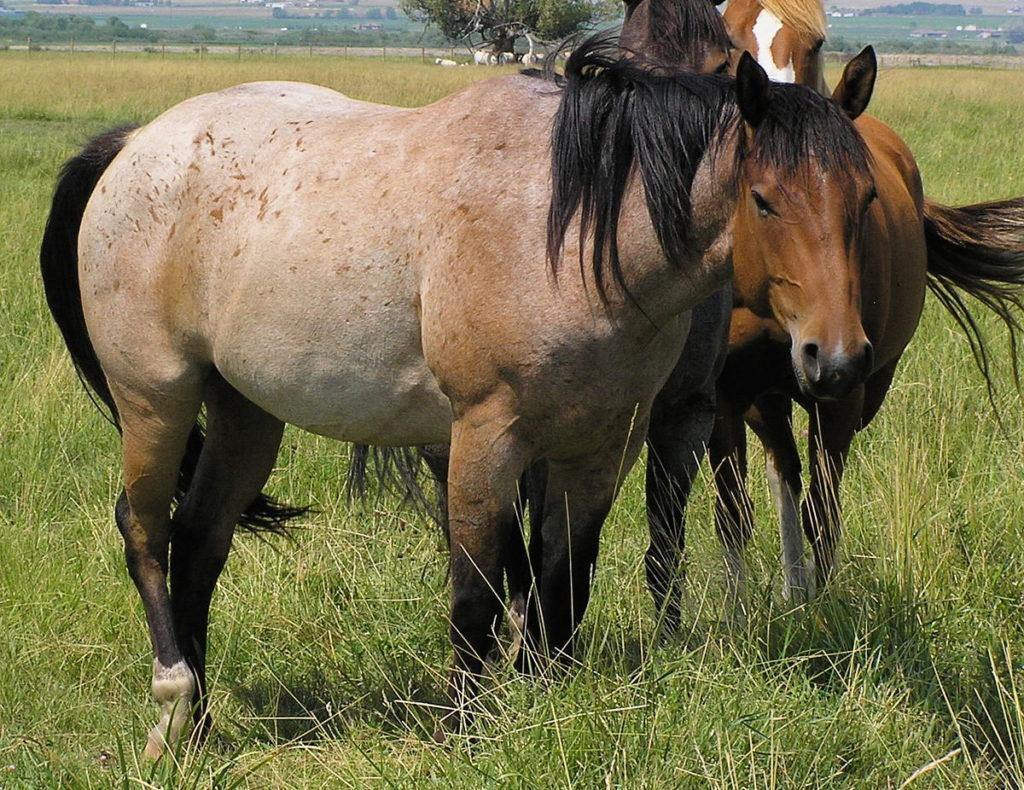
Breeding, maintenance and care
Caring for roan horses is no different from the maintenance of other species. Individuals are kept in herds or in a stable, it depends on the climatic conditions of the region. In an area with a warm climate, horses can graze all year round with shelter and constant access to water. If there is enough grass in the pasture, additional feeding is not required. When grazing horses on scarce fields, hay and oats are introduced into the diet. If possible, the pasture is sown with special grass, for example, the meadow timothy is used.
In the stable, animals are fed 3-4 times a day. Provide drinking water in the same amount. On hot days, the amount of liquid in the diet of the horses is increased. Horses kept for physical work or competition are fed more often than others.
The main part of the diet should be: barley, oats, corn, rye and wheat. Animals are not given water after walking in the fields with legumes and clover. Fluid in the body can cause bloating. Roan individuals are a great pride of farmers, especially if the animal's background color is black. To breed a stallion of this color, breeders carefully select a pair of parents.
